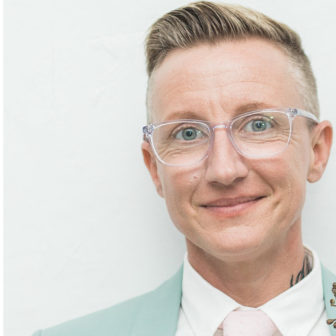
Monkey Business Images/Shutterstock
.
Angel was unable to live at home because her mother ran a day care center out of their house and her clients threatened to leave if Angel, a young transgender woman, remained in the house. While her mother did not disapprove of Angel’s gender identity, her livelihood and thus the livelihood of her other children depended upon her business.
Two primary factors led to Angel’s homelessness — the economic (in)stability of her family and the intolerance of her community. So, at age 17, Angel went to a local youth shelter. In the shelter, she was housed on the male floor and was harassed by her peers.

Jama Shelton
She did not return after the first night, sleeping on the streets where she believed she would be safer. When she was able to get to school, she was harassed by her classmates. After a physical altercation at school, during which the police were called, Angela was suspended. She did not return.
A bright and creative young woman, Angela had dreams of attending art school and becoming a fashion designer. Instead, she began applying for retail and food service jobs in the hopes of earning enough money to rent a room. Her identification documents included her birth name and assigned sex, and she was unable to find anyone willing to hire her.
Rather than continuing with the details of this story, I will let the reader imagine the remainder of Angel’s teenage years and to consider the ways in which our systems failed her.
LGBTQ Youth Homelessness
Homelessness among LGBTQ youth is widely recognized as a unique social problem. Given their overrepresentation in the population of youth experiencing homelessness and the marginalization they experience in youth-serving systems, this recognition is warranted. And we need to take it a step further.
There are two ways in which our work to solve LGBTQ youth homelessness frequently falls short. The first is grouping LGBTQ youth together as if they are a homogenous group. The second is focusing our interventions at the individual and interpersonal levels, without simultaneously addressing the structural conditions that place LGBTQ youth, and especially LGBTQ youth of color, in precarious housing situations that increase their risk for a range of health outcomes, victimization, criminalization and involvement in the juvenile justice system.
LGBTQ youth are not a monolithic group. The needs and experiences of one subgroup within the population of LGBTQ youth experiencing homelessness are not necessarily the same needs and experiences of another subgroup. For instance, cisgender LGBQ youth (whose gender identity is the same as their gender assigned at birth) may have vastly different experiences than youth who are transgender or gender expansive.
Likewise, the experiences and resulting needs of LGBTQ youth of color are different than those of white LGBTQ youth. Although transgender youth can also possess a minority sexual orientation, conflating their experiences with LGBQ youth ignores a salient aspect of their identity. Therefore, including transgender youth in research on sexual minorities, rather than as a distinct category of inquiry, invisibilizes their gender identity-related experiences.
Further, examining the experiences of LGBTQ youth experiencing homelessness without including a race/ethnicity-based analysis erases the experiences of LGBTQ youth of color. As the intersections of race/ethnicity, gender identity and sexual orientation contribute to differential housing experiences among LGBTQ youth, so too should these intersections be considered in the development of policy, research and programmatic interventions. As such, it is imperative that existing policies regarding the collection of sexual and gender identity data are upheld and guidance made available where such policies do not yet exist.
Oppressive structures, ideologies must be fought
When we aim our interventions at the individual and interpersonal levels without also paying attention to the structural conditions that produce and maintain the marginalization of LGBTQ youth and youth of color, we are perpetuating the problem. Yes, we may see individual successes, and those should be celebrated. Staff members may be trained to recognize sexual orientation, gender and racial bias in their work and alter their practices. Individual young people may find work, move out of the shelter and live independently.
But in their places, new staff members will be hired and more LGBTQ youth will become homeless. We must also focus our interventions on the oppressive ideologies underpinning the social systems and structures that do not adequately serve LGBTQ youth and youth of color. Likewise, we must focus our interventions on the criminalization of homelessness so that when LGBTQ youth engage in survival strategies and street economies — often because our education system has failed them — so they do not become involved in the juvenile justice system. Both LGBTQ youth and youth of color are overrepresented in the juvenile justice system, just as they are overrepresented in the population of youth experiencing homelessness.
LGBQ youth experience homelessness at earlier ages and remain homeless or unstably housed for longer periods of time than their heterosexual counterparts. These disparities are greater for transgender youth. A commonly cited reason for homelessness among LGBTQ youth is family conflict related to or exacerbated by sexual and/or gender identity. However, social and economic conditions and structural factors also contribute to homelessness among LGBTQ youth. To focus solely on family characteristics and individual risk ignores the systematic oppression and stigmatization at play in the lives of marginalized youth, and locates the problem within the individual family rather than within the discriminatory structures that exclude LGBTQ people, housing and economic policies rooted in white supremacy, and the resulting ignorance and hate enacted upon LGBTQ youth and youth of color.
Jama Shelton is an assistant professor at the Silberman School of Social Work at Hunter College. Their work focuses on homelessness among LGBTQ youth.































